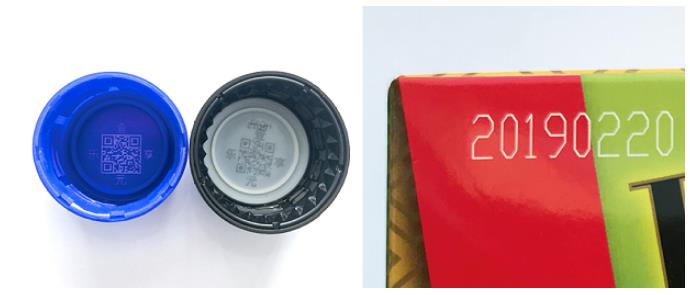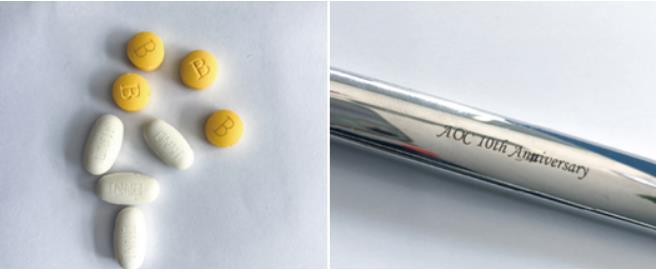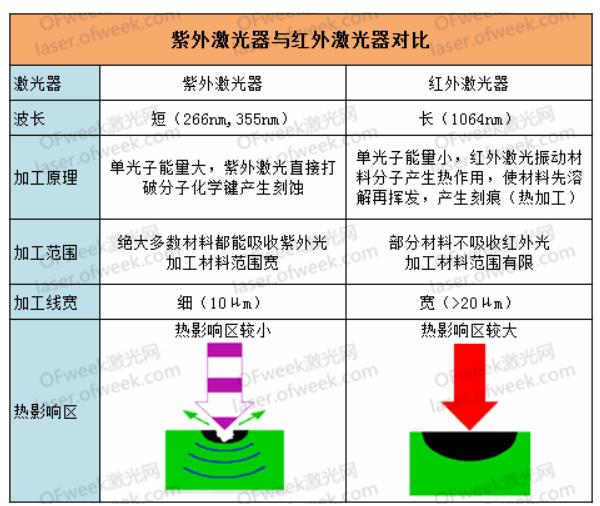UV Laser Marking 3M N95/KN95 Masks to Distinguish Authenticity
Aug 17 , 2022UV Laser Marking 3M N95/KN95 Masks to Distinguish Authenticity
Since the outbreak of the epidemic, masks have become a necessity of life at this stage. However, the huge demand gap has made some unscrupulous traders take advantage of it, and a large number of inferior masks have entered the market. Fake masks not only have no protective effect, but also have the risk of contamination due to substandard production environment hygiene, which is extremely harmful to personal health. To identify real and fake masks, the most direct way is to check the laser anti-counterfeiting marks.
For boxed 3M N95/KN95 series masks, it can be identified by the anti-counterfeiting label on the mask box. The labels of real masks will change color from different angles, while the labels of fake masks will not change color. For bulk 3M N95/KN95 series masks, the authenticity can be identified by observing the fonts on the masks. The real 3M mask text is marked by laser, and the font has twill, while the fake is printed by ink and has dots (traces of uneven ink).
In fact, laser marking anti-counterfeiting technology can not only be used to identify the authenticity of masks, but also plays a huge role in packaging anti-counterfeiting and traceability in the fields of food, medicine, tobacco, beauty, and electronic products. It can be said that laser marking Anti-counterfeiting has been integrated into every aspect of our lives. So why can laser marking play such a huge role in the packaging anti-counterfeiting market? What advantages does it have over traditional methods?
Why laser: the characteristics and application advantages of laser marking anti-counterfeiting
The basic principle of laser marking is to use a laser beam with high energy density to act on the surface of the material, to instantly vaporize or change the color of the surface material by focusing, and to form the required permanent image by controlling the path of the laser on the surface of the material. Text mark. Since laser marking can print various characters, symbols and patterns, the size of the characters can be from millimeters to micrometers, which has special significance for the anti-counterfeiting of products, so it is widely used in the anti-counterfeiting market.
Before the large-scale application of laser marking, the marking on packaging was usually printed with ink. The marks printed by this traditional method tend to peel off over time, become blurred, easily tampered with, and cannot be used with high precision. Although it has advantages in equipment cost, the continuous cost of consumables (ink) is high, and it will cause some pollution to the environment.
Taking the most common food packaging as an example, because the marks printed by traditional methods are easy to erase and fall off, some criminals will print some expired or even counterfeit products with brand trademarks, or modify the production date to make these substandard products. circulated in the city. Such phenomena are common in the fields of grain and oil, beverages, snacks, sauces and so on. In addition, for some paper food packaging, the harmful substances of ink may penetrate the packaging and contaminate the food, posing a threat to the health of consumers.
Anti-counterfeiting application of laser marking from the identification of real and fake masks

Beverage caps, food packaging marking
The picture comes from the official website of Inno Laser
The emergence of laser technology has solved a series of problems brought by traditional ink printing. For food packaging, the use of laser marking has the advantages of non-toxic, non-polluting, high efficiency, high definition, exquisite patterns, and never falling off. In addition, laser marking can also be combined with computer technology, and by connecting to the database system, we can track and inquire about the detailed information of the factory and circulation of food in time to ensure that we can eat with confidence.
The medical industry is inseparable from the escort of laser marking. Since medical products are in direct contact with the human body, it is related to the life and health of the people, so the prevention of counterfeiting and anti-counterfeiting of medical products has become the top priority of protecting the health and safety of consumers.

Medicine, metal surface marking
The picture comes from the official website of Inno Laser
In addition to some of the characteristics mentioned above, the marking of medical devices and drugs also has some special requirements. For example, for common pills and soft capsules, if lithographic printing is used, it will cause pressure on the product, while non-contact laser marking will not deform the capsule, and can mark smaller information on tiny pills. On medical devices such as stainless steel surgical and dental equipment, the laser can mark absolutely smooth surfaces, which prevents bacteria from adhering to the surface, and the marked surface does not damage the corrosion-resistant chemical passivation treatment , allowing the anti-corrosion coating to persist even after years of use and countless cleanings and sterilizations. Another example is the 3M mask mentioned at the beginning, whether there is a laser mark is an important sign to distinguish the authenticity.
Laser marking is also different: unique advantages of UV lasers for food, medical applications
As we all know, there are many types of lasers, and they are suitable for different materials. For example, fiber lasers are suitable for various metal materials, CO2 lasers are suitable for most polymer materials, and ultraviolet lasers are suitable for more precise and demanding application scenarios.
In fact, CO2 and fiber lasers have long been developed for marking applications. The light emitted by these lasers is in the infrared range, and the essence of the marking process is to heat the material to bleach, carbonize, or ablate through thermal interaction to create color contrast, but this heating changes the heat affected zone (HAZ) of the material. Chemical structure, carbonization occurs or the surface is not smooth. For plastics commonly used in food packaging, due to its low absorption rate of infrared light, the heat generated by infrared lasers can damage the surface of some packaging materials, so it cannot be used in the food packaging industry on a large scale.
In this context, the advantages of UV lasers emerge. Most materials absorb UV light more strongly than infrared light, and UV lasers have higher photon energies. When the ultraviolet laser acts on high molecular polymers such as PI, it can directly break the chemical bonds of the material, so that the material fragments are discharged in the form of small particles or gas, so as to achieve the purpose of stripping and removing the material. Since most of the energy is used to break chemical bonds, very little is converted to heat, essentially eliminating changes in the heat-affected zone (HAZ) and surrounding materials. For most white plastics (the pigment is TiO2), TiO2 strongly absorbs UV light and undergoes a change in crystal structure. This change darkens the material in the corresponding area, resulting in smooth, legible marks inside the material.

Comparison of ultraviolet laser and infrared laser
OFweek Laser Network Mapping
Representative companies of ultraviolet lasers: sales increased by 177% in 2 years, market share exceeded 20%
Laser marking is one of the largest application areas of laser processing. Thousands of companies at home and abroad are engaged in the production and sales of laser marking machines, and the market demand for lasers used for marking is also huge. Taking ultraviolet lasers as an example, the sales volume of domestic ultraviolet lasers in 2015 was about 3,700 units, while that in 2018 reached about 15,000 units, of which nanosecond ultraviolet lasers accounted for 80% (about 12,000 units). It is expected that sales in 2019 will increase compared to 2018 33% (data from the 2019 China Laser Industry Development Report).
With the rapid expansion of the UV laser market, domestic companies have also made great progress. According to OFweek Laser Network, Inno Laser's nanosecond UV laser sales reached 2,633 units in 2018, accounting for about 21.94% of the domestic sales in that year, leading the domestic market, while the sales in 2016 were only 947 units (an increase of 177% in 2 years). In September 2019, Inno Laser's FORMULA series high-power ultraviolet nanosecond laser technology was rated as the international advanced level by the China Science and Technology (Beijing) Science and Technology Achievement Evaluation Center, and obtained the registration certificate of scientific and technological achievements of the Ministry of Industry and Information Technology.